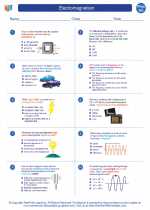Physical Therapy
Physical therapy is a healthcare profession that focuses on evaluating, diagnosing, and treating musculoskeletal and movement-related conditions. It aims to restore and improve the physical function and mobility of individuals, as well as alleviate pain and prevent further injury. Physical therapists use a variety of techniques and modalities to help patients regain strength, flexibility, and range of motion, and to improve their overall quality of life.
What is the role of a physical therapist?
Physical therapists are trained healthcare professionals who work with patients to develop personalized treatment plans that address their specific needs and goals. They utilize a combination of manual therapy, therapeutic exercises, and modalities such as heat, cold, ultrasound, and electrical stimulation to help patients manage pain, recover from injury or surgery, and improve their overall physical function.
How can physical therapy help?
Physical therapy can be beneficial for individuals with a wide range of conditions, including musculoskeletal injuries, orthopedic surgeries, neurological disorders, sports-related injuries, chronic pain, and mobility impairments. By focusing on rehabilitation and functional improvement, physical therapy can help patients regain independence, prevent disability, and enhance their overall well-being.
What are the educational requirements to become a physical therapist?
To become a physical therapist, individuals typically need to earn a Doctor of Physical Therapy (DPT) degree from an accredited program. This typically involves completing several years of undergraduate coursework in subjects such as biology, anatomy, physiology, and kinesiology, followed by a doctoral-level program focused on clinical practice, patient care, and evidence-based practice. Additionally, physical therapists must pass a licensure exam to practice in their respective state.
Study Guide for Physical Therapy
1. Basic Anatomy and Physiology: Understanding the musculoskeletal system, nervous system, and cardiovascular system is crucial for physical therapists to assess and treat patients effectively.
2. Therapeutic Modalities: Familiarize yourself with the various modalities used in physical therapy, such as heat, cold, electrical stimulation, and ultrasound, and understand their applications and effects on the body.
3. Therapeutic Exercise: Learn about different types of therapeutic exercises, including range of motion exercises, strengthening exercises, and balance and coordination exercises, and their role in rehabilitation.
4. Orthopedic Conditions: Gain knowledge of common orthopedic conditions and injuries, their assessment, treatment, and rehabilitation protocols.
5. Neurological Rehabilitation: Understand the principles of neurorehabilitation and how physical therapy can help individuals with neurological disorders regain function and mobility.
6. Evidence-Based Practice: Learn about the importance of evidence-based practice in physical therapy, including research methods, outcome measures, and clinical decision-making based on the best available evidence.
7. Patient Communication and Education: Develop effective communication skills and learn how to educate patients about their conditions, treatment plans, and home exercise programs.
8. Professional Ethics and Legal Considerations: Understand the ethical and legal responsibilities of physical therapists, including patient confidentiality, informed consent, and professional boundaries.
Overall, a strong foundation in anatomy, physiology, therapeutic techniques, and evidence-based practice is essential for success in the field of physical therapy.
[Physical Therapy] Related Worksheets and Study Guides:
.◂Physics Worksheets and Study Guides High School. Electromagnetism

 Worksheet/Answer key
Worksheet/Answer key
 Worksheet/Answer key
Worksheet/Answer key
